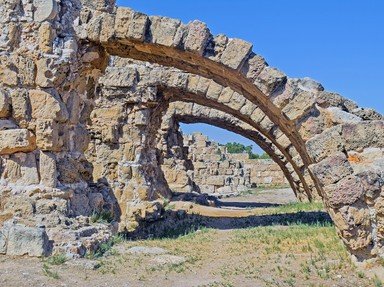Quiz Answer Key and Fun Facts
1. Construction of the Mausoleum at Halicarnassus began in 353 BC, when Halicarnassus was the capital city of the Kingdom of Caria. In what modern country can the ruins be found?
2. Who was the ruler of Halicarnassus at the time construction began on the mausoleum?
3. Work on the completion of the Mausoleum of Halicarnassus was overseen by the ruler's widow, Artemisia II. Which of the following does NOT describe her?
4. In looking at a model of the Mausoleum of Halicarnassus one can see, without a doubt, that its architects were influenced by which two civilizations?
5. No expense was sparred during the construction of the Mausoleum of Halicarnassus. Artisans who were considered to be the "best of the best" were hired. One of them, Scopas of Paros, had worked on the reconstruction of one of the other Ancient Wonders that was close by. Which one?
6. The base of the Mausoleum of Halicarnassus was made of marble and decorated with sculpted images that remained attached to the background. What is the name for this type of art?
7. The top of the Mausoleum of Halicarnassus was adorned with a feature that is called a quadriga. In this case, what is a quadriga?
8. No record has ever been made regarding the original damage done to the Mausoleum of Halicarnassus. Historians believe it was caused by which of the following events?
9. It is known that many of the materials first used to build the Mausoleum of Halicarnassus were later used to bolster a fortification that was originally known as the Castle of St. Peter. Who built this castle?
10. Which modern museum houses a collection of fine artifacts that were found at the site of the Mausoleum of Halicarnassus in the mid-1800s by archaeologist Charles Thomas Newton?
Source: Author
ponycargirl
This quiz was reviewed by FunTrivia editor
Bruyere before going online.
Any errors found in FunTrivia content are routinely corrected through our feedback system.
